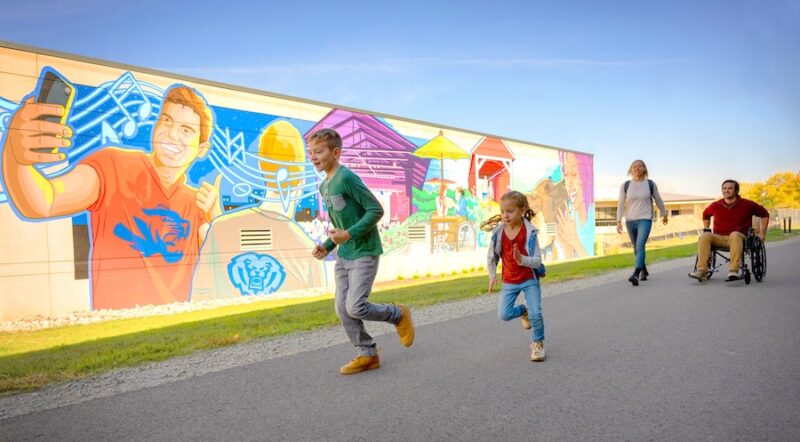Seven Hot Tips for Cold-Weather Biking
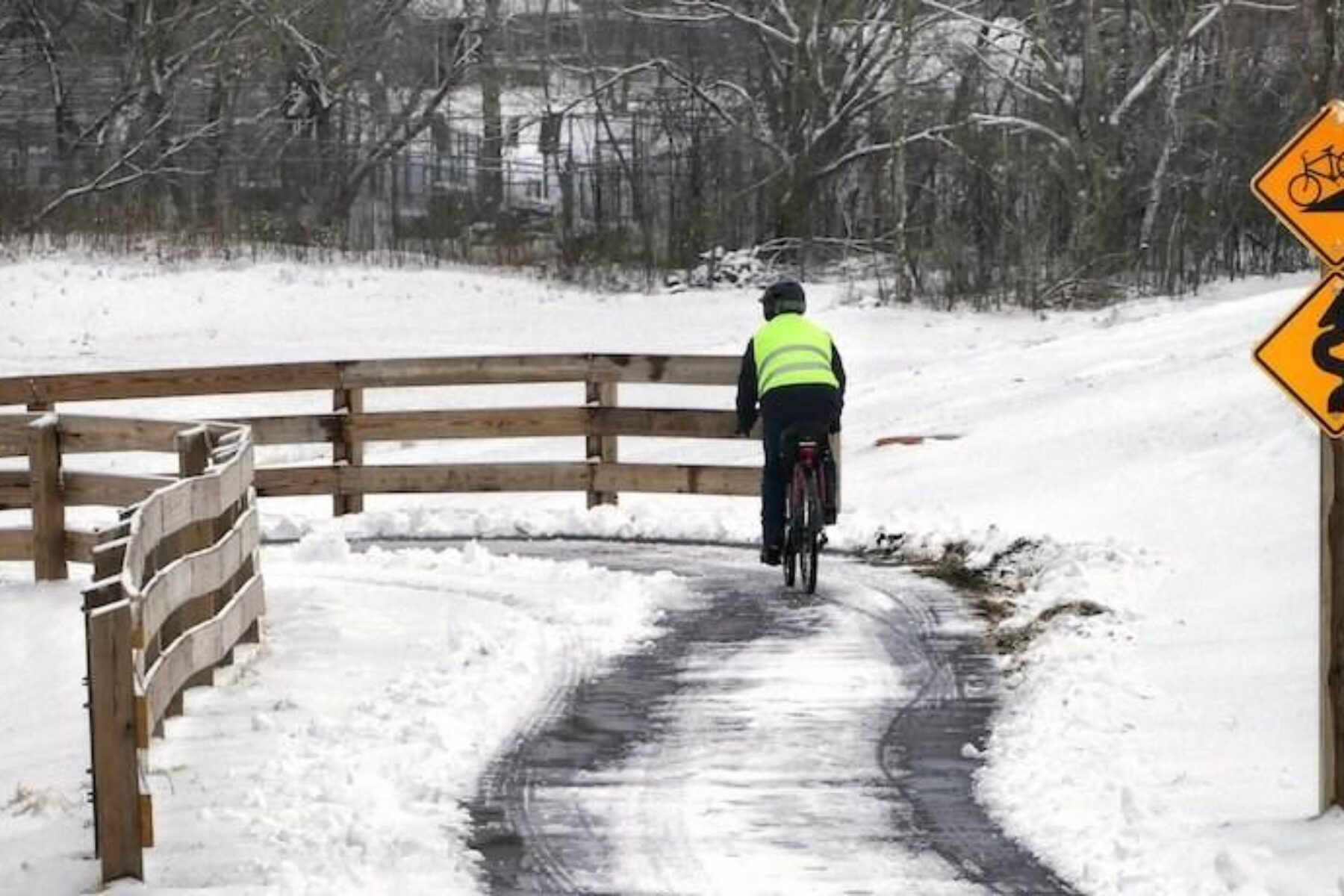
Baby, it’s cold outside—but the enumerable physical and mental health benefits that come with biking don’t have to end in winter. There’s no doubt that pedaling in areas of snow and ice can be more challenging, but with good prep and planning, bike riding can be a year-round activity. We hope these tips for cold-weather biking will help you embrace and enjoy winter riding, but, if you’re new to it, just take it slow. Start by testing your equipment and comfort level with shorter, close-to-home trips, and ride with a buddy, if you can. For experienced winter warriors, please feel free to share your favorite tips in the comments below.
Special thanks to Eric Oberg, RTC’s Midwest Regional Director, and Willie Karidis, RTC’s Route of the Badger Project Manager, for their assistance, and to Bicycle Colorado; the organization’s Winter Riding 101 webinar was a key source of information for this article.

Tip 1: Plan Ahead.
This first step begins even before you leave the house, as biking in inclement weather does require a bit more planning than fair-weather riding. This one seems like a no-brainer, but do be sure to check the weather before you head out to ensure that conditions are safe for your outbound and anticipated return trips. And give yourself more time to get there by leaving earlier than you normally would, as you’ll likely be traveling at slower speeds than usual.
In colder conditions, you may want to consider alternative transportation options for one leg of your trip, such as taking a public bus on the way home. It’s also good to have this information in hand in case the snow and ice conditions turn out worse than expected and you need to bail on biking for safety. (If you’re new to riding a bus with a bike, you can find some helpful tips online, like this one.) Keep in mind that some communities don’t prioritize plowing trails and that bike lanes are sometimes compromised when streets are plowed, so research alternative biking routes, too, just in case you run into snow-covered areas.
Tip 2: Where the Rubber Meets the Snow.
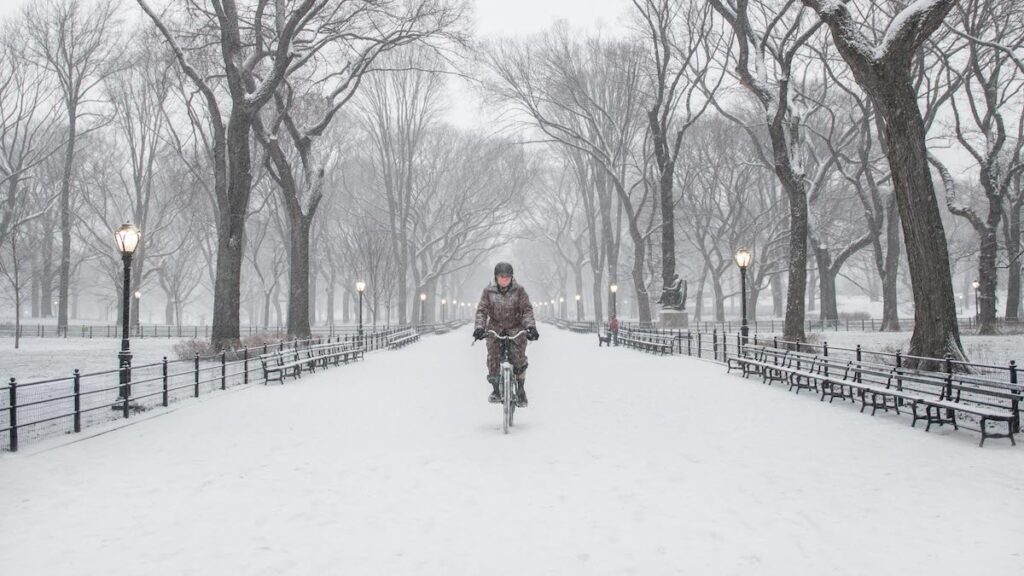
In snowy conditions, you’ll probably want wider, knobbier tires, like those on a mountain bike, for better grip. (For extreme conditions, you can even get studded bike tires.) You may also wish to lower your tire pressure, so that more of the tread will have contact with the ground. Your tires’ recommended PSI should be printed on the sidewall; in the winter, you can fill them to a few pounds less than that number.
Tip 3: Lighten Up.

Since there’s less daylight in winter, take steps to ensure that you’ll be seen by others if you’ll be out riding when it gets dark. Make sure you have a front light mounted to your handlebars (also good for keeping an eye on surface conditions) and a red rear light. (If you don’t have one, our friends at REI have some good tips for choosing a bike light.) You can also increase your visibility with adhesive reflective stripes on your frame, eye-catching wheel-mounted lights (side benefit: they look really cool) and helmet lights.
If you’re out during the day, when the world is a palette of white and gray, wear bright colors and reflective clothing, if you have them. Inexpensive options include reflective vests or bands that you can wear over your coat and clothing. Drivers often aren’t expecting people on bikes in the winter time, so standing out will help keep you safe.
Tip 4: Stay Warm.
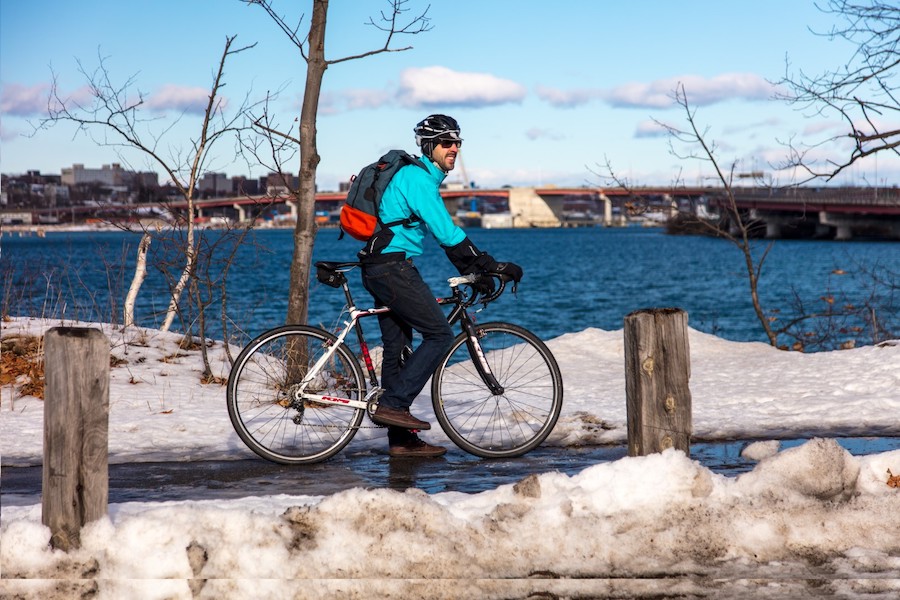
To keep your head warm; find a thin cap that fits under your helmet, or wear fleece-lined ear warmers. A neck gaiter (also called a buff) can also limit the exposed skin on your neck and face. And don’t forget your sunglasses; they can combat the glare from sunlight bouncing off the snow and protect your eyes from biting wind and kicked up slush, too.
Dressing in multiple layers is the key to comfort for winter riding, so you can peel them off or build them up as conditions require. It’s a good idea, however, to start off slightly cold, as your body will warm up with physical activity, and it’s imperative to avoid overheating and sweating. For your outer layer, you’ll want water- and wind-resistant protection, and, for your inner layer, a moisture-wicking fabric to combat sweat. Consider options designed for skiers or other active winter pursuits; much of these things, however, can be found at home. And don’t forget to bring a backpack to store any layers that you shed.
Layers aren’t just for your top half; consider wearing long johns under your jeans (or fleece pants, if it’s really cold). Top feet off with hiking or snow boots for extra protection and wear thick socks if space allows. (If it feels tight, stick to your normal socks as you don’t want to cut off circulation, which would make your feet colder.) For your hands, a thin glove can be worn with an insulated mitten over the top, such as a “lobster” glove to keep fingers warm out on your handlebars.
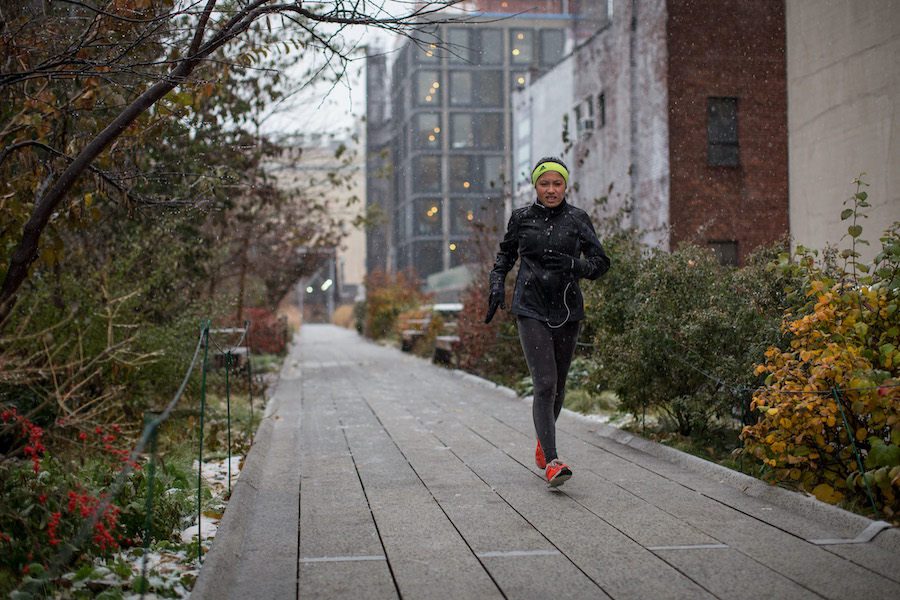
Tip 5: Slow Your Roll.
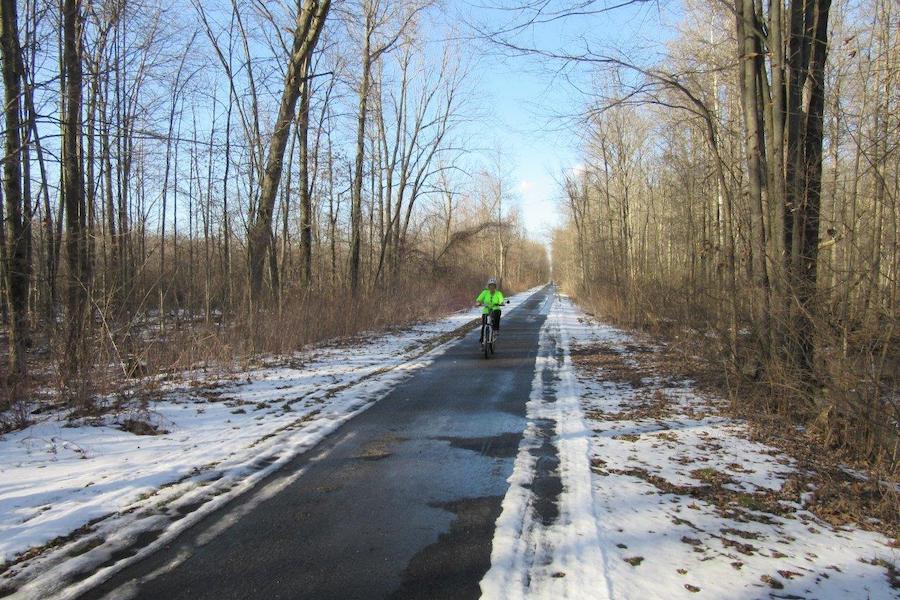
Take it slow during snowy and icy conditions, so you can see obstacles coming and maximize your reaction time. Brake earlier than normal, and aim not to do any sudden braking or movements on slippery surfaces. Take wide turns, and don’t hesitate to dismount if you’re not feeling comfortable with the conditions.
Tip 6: Grapple with the Grit.
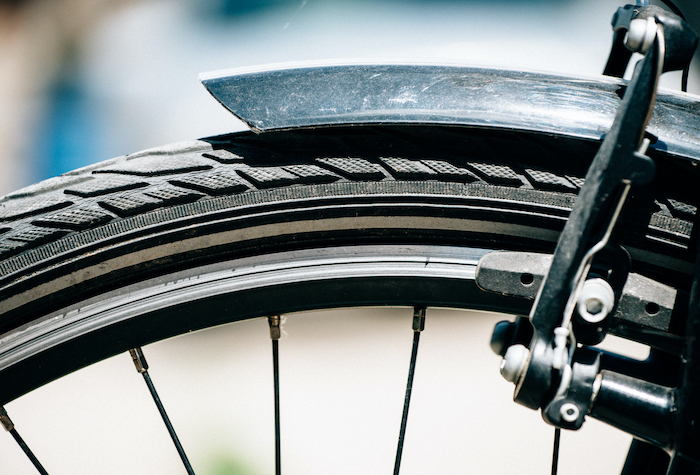
As you’re riding, snow and road grime will inevitably flip up from your tires; protect yourself by installing fenders for the winter. You may also want to wear waterproof overpants to keep the road spray off your clothes. If you’re commuting to work, consider packing a change of clothes and wipes to freshen up after your trip. (Bringing lip balm and lotion for weather-chapped skin isn’t a bad idea either.)
Salt and other chemicals used to combat snow on roads, sidewalks and trails are also harmful for your bike, so clean your bike (especially the drivetrain and wheels) more often in the winter, and be sure to lube your chain. (If you’re a newbie, here’s a helpful how-to video to do both.)
Tip 7: Eat, Drink, and Be Merry.
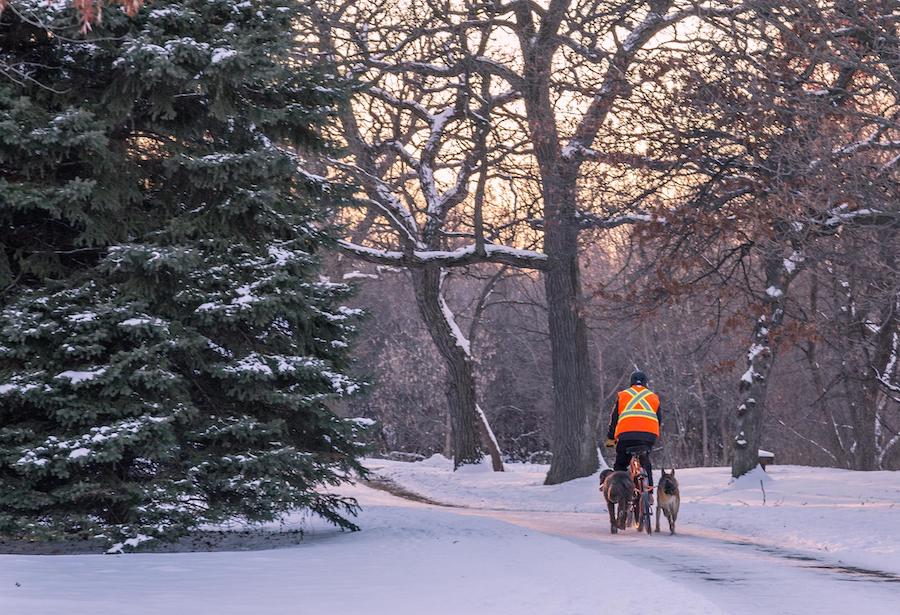
When it’s cold out, it doesn’t feel as intuitive to drink water like it does in hot weather, so remember to bring some along and make a conscious effort to stay hydrated. If you’re commuting to work or riding longer distances, pack snacks, too; your body is expending extra energy trying to stay warm and needs fuel. Lastly, consider bringing a hot drink in a thermos as a toasty treat for your hard work!
Winter Trail Tips
- Wintertime Trail Fun
- Winter “Share the Trail” Etiquette and Safety Tips
- Seven Hot Tips for Cold-Weather Biking / Siete buenos consejos para andar en bicicleta en climas fríos
- Rail-Trail Tips for Cross-Country Skiing (A 101 Guide) / Consejos para senderos ferroviarios para esquí de fondo (una guía 101)
- The Magical World of Snowshoeing: A How-To Guide for Trails) / El mágico mundo de las raquetas de nieve: una guía práctica para senderos
- How to Adapt Trail Activities and Gear for Cold and Winter Conditions
- 10 Rail-Trail Winter Wonderlands
When you subscribe to Rails to Trails magazine, you’ll have access to many other features like this one. Our magazine is a premium of Rails-to-Trails Membership. Join today to start receiving the magazine!

Donate
Everyone deserves access to safe ways to walk, bike, and be active outdoors.
